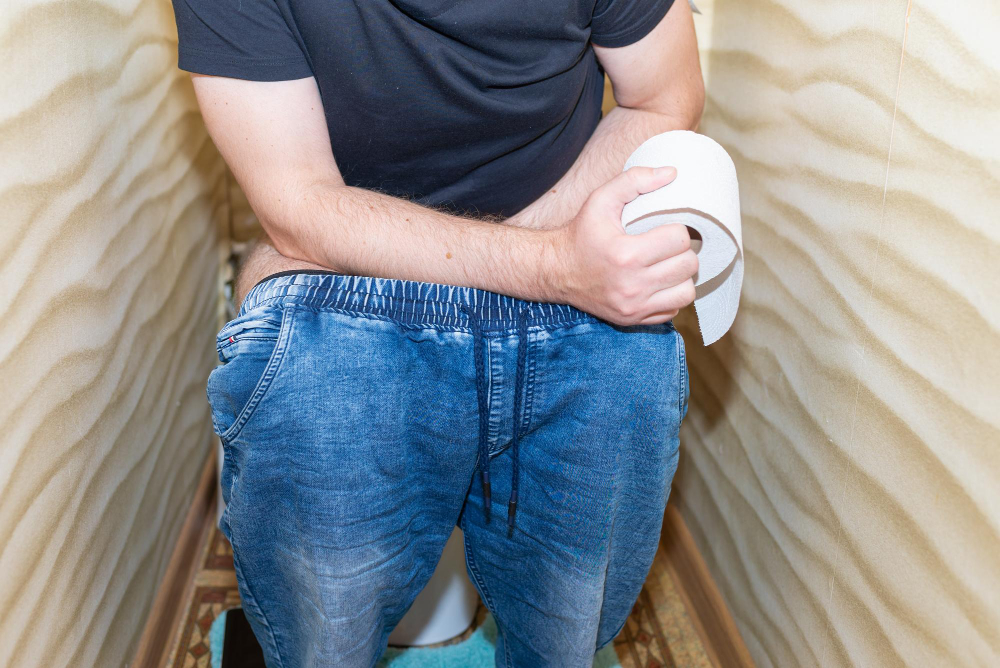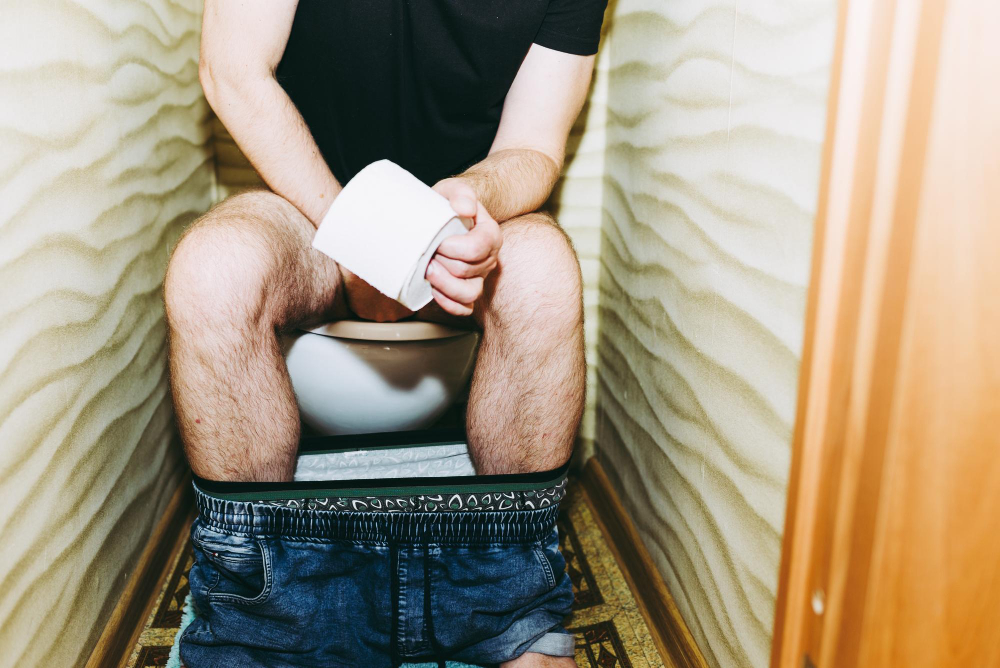
Urinary incontinence is a condition characterized by the involuntary leakage of urine, where individuals lose control over their bladder. This condition can range from occasional small leaks during activities such as coughing or sneezing to a complete inability to control urination. Although urinary incontinence is common—affecting millions of people worldwide—it can be distressing, impacting quality of life, emotional well-being, and social interactions. People with incontinence may feel embarrassed and often structure their day around bathroom accessibility, avoiding social events and limiting their daily activities to prevent “accidents.”
According to the National Institute of Diabetes and Digestive and Kidney Diseases (NIDDK), urinary incontinence affects both men and women, though it is more common in women, particularly those who are older or who have given birth. Fortunately, there are effective treatments and management strategies available, allowing individuals to lead full and active lives despite their condition.
Types of Urinary Incontinence
Urinary incontinence can be divided into several types, each with distinct symptoms and underlying causes:
1. Stress Incontinence
Stress incontinence occurs when physical activities or pressure on the bladder, such as coughing, laughing, sneezing, or lifting heavy objects, leads to urine leakage. This type is more common in women, particularly those who have experienced childbirth, as pregnancy and childbirth can weaken the muscles supporting the bladder. Stress incontinence is also associated with aging, obesity, and certain surgeries, like prostate surgery in men.
2. Urge Incontinence (Overactive Bladder)
Urge incontinence is marked by a sudden, intense urge to urinate, followed by involuntary leakage. This type is often associated with an overactive bladder, where the bladder muscles contract involuntarily. Urge incontinence may occur during the day or night, often causing frequent trips to the bathroom. Common causes include nerve damage, infections, and conditions like diabetes and Parkinson’s disease.
3. Overflow Incontinence
Overflow incontinence happens when the bladder fails to empty completely, leading to frequent dribbling of urine. Individuals may experience a constant or intermittent flow of urine as the bladder overflows. This type is often caused by an obstruction in the urinary tract, such as an enlarged prostate in men, or weakened bladder muscles. Medical conditions such as diabetes or multiple sclerosis can also lead to overflow incontinence.
4. Functional Incontinence
Functional incontinence occurs when a person cannot reach the bathroom in time due to physical or cognitive limitations. People with arthritis, limited mobility, or neurological conditions may have difficulty accessing the bathroom when needed, leading to accidents. This type is common in older adults, particularly those with dementia or other conditions that affect memory and mobility.
5. Mixed Incontinence
Mixed incontinence is a combination of more than one type, usually stress and urge incontinence. This type is common in women, particularly those who have experienced pelvic floor weakening due to childbirth or aging.
For more detailed information on types of incontinence and symptoms, the National Institutes of Health (NIH) provides extensive resources on urinary health and bladder control.
Causes and Risk Factors for Urinary Incontinence
Several factors contribute to urinary incontinence, and understanding these causes can help in managing and preventing the condition.
- Aging: As people age, the bladder muscles and the muscles supporting the pelvic floor naturally weaken, making it more challenging to control urination. Age-related changes also reduce bladder capacity and increase the likelihood of overactive bladder.
- Pregnancy and Childbirth: Pregnancy places significant pressure on the bladder, and vaginal delivery can weaken pelvic floor muscles and damage nerves, increasing the risk of incontinence. Many women experience stress incontinence after childbirth due to these factors.
- Prostate Issues in Men: Men with enlarged prostate or those who have undergone prostate surgery are more likely to experience incontinence. The prostate surrounds the urethra, and enlargement or surgery can impact urinary control.
- Neurological Disorders: Conditions like multiple sclerosis, Parkinson’s disease, and spinal cord injuries disrupt nerve signals that control the bladder, leading to various types of incontinence.
- Obesity: Excess body weight adds pressure on the bladder and surrounding muscles, increasing the risk of incontinence, especially stress incontinence.
- Medications: Certain medications, including diuretics, sedatives, and muscle relaxants, can increase the risk of urinary leakage.
For more information on causes and risk factors, visit the Centers for Disease Control and Prevention (CDC).
Symptoms of Urinary Incontinence
The primary symptom of urinary incontinence is involuntary leakage of urine. The severity and frequency of symptoms depend on the type of incontinence and the underlying cause. Additional symptoms may include:
- Frequent Urination: A need to urinate more frequently than usual, often accompanied by small leaks.
- Sudden Urge to Urinate: Intense and sudden need to urinate, particularly with urge incontinence.
- Nighttime Urination (Nocturia): Waking up multiple times during the night to urinate.
- Discomfort or Pain: Painful urination may accompany infections or other conditions that exacerbate incontinence.
If you experience these symptoms regularly, it’s essential to consult a healthcare provider for an evaluation. The American Urological Association (AUA) offers more insights into symptoms and when to seek medical help.
Diagnosing Urinary Incontinence
Diagnosing urinary incontinence involves a comprehensive assessment to determine the type and underlying cause of the condition. Common diagnostic methods include:
- Medical History and Physical Examination: Physicians will review the patient’s medical history, symptoms, and medications. A physical examination, including a pelvic or prostate exam, helps identify potential causes.
- Urinalysis: A urine test can detect infections, blood, or other abnormalities in the urine that may contribute to incontinence.
- Bladder Diary: Keeping a diary of bathroom visits, fluid intake, and incontinence episodes helps doctors understand the frequency and severity of symptoms.
- Post-Void Residual (PVR) Measurement: This test measures the amount of urine left in the bladder after urination using ultrasound or catheterization. High PVR levels can indicate overflow incontinence.
- Urodynamic Testing: Urodynamic tests evaluate bladder function, pressure, and flow rates to diagnose issues with bladder control.
- Cystoscopy: In this procedure, a thin tube with a camera (cystoscope) is inserted into the urethra to visually inspect the bladder and urethra for abnormalities.
Treatment Options for Urinary Incontinence
Treatment for urinary incontinence depends on the type, severity, and underlying cause. A combination of lifestyle changes, exercises, medications, and medical interventions may be recommended.
1. Lifestyle Modifications
Making changes in daily habits can help manage symptoms and reduce the frequency of leaks.
- Fluid Management: Limiting fluid intake before bedtime and reducing caffeine and alcohol consumption can help prevent nocturia and decrease urinary frequency.
- Bladder Training: Scheduling bathroom visits and gradually extending the time between voids helps train the bladder to hold urine longer, particularly for urge incontinence.
2. Pelvic Floor Exercises
Pelvic floor exercises, or Kegels, strengthen the muscles that support the bladder and urethra. These exercises are effective for managing stress incontinence, especially in women post-pregnancy. Consistent practice can improve muscle tone and control.
- Guided Physical Therapy: A physical therapist specializing in pelvic health can provide guidance on performing Kegel exercises and other techniques to strengthen the pelvic floor.
For guidance on pelvic floor exercises, visit the National Institute on Aging (NIA).
3. Medications
Certain medications can help manage symptoms of urge incontinence and overactive bladder.
- Anticholinergics: Medications such as oxybutynin and tolterodine relax bladder muscles, reducing urgency and frequency.
- Beta-3 Agonists: Mirabegron is a newer class of medication that relaxes the bladder muscle, increasing its capacity and reducing urgency.
- Topical Estrogen: For postmenopausal women, low-dose topical estrogen can improve the health of the vaginal and urethral tissues, potentially reducing symptoms of incontinence.
4. Medical Devices
For women with stress incontinence, certain devices can support the urethra and reduce leakage.
- Pessary: A pessary is a silicone device inserted into the vagina to support the bladder and reduce leaks. Pessaries come in various shapes and sizes, and a healthcare provider can help with fitting.
- Urethral Inserts: Small, disposable devices can be inserted into the urethra to block leaks, especially during activities that cause stress incontinence.
5. Injectable Bulking Agents
Injections of bulking agents can thicken the area around the urethra, helping it close more tightly to prevent leaks. This procedure is typically performed in a doctor’s office and may require repeat treatments.
6. Surgery
Surgery may be recommended for individuals with severe incontinence who do not respond to other treatments.
- Bladder Sling: A sling made of mesh or tissue is placed under the urethra to provide support, preventing leaks during activities that cause pressure on the bladder.
- Artificial Urinary Sphincter: This device, typically used for men, is surgically placed around the urethra to help control urination. The device inflates and deflates to open and close the urethra.
- Bladder Neck Suspension: A procedure that provides additional support to the bladder neck, reducing stress incontinence.
The U.S. Food and Drug Administration (FDA) offers information on medical devices for incontinence and their safety considerations.
Managing Life with Urinary Incontinence
Living with urinary incontinence can be challenging, but self-care strategies and support can improve quality of life.
- Absorbent Products: Using pads or protective underwear can provide peace of mind and help manage leaks discreetly.
- Skin Care: Moisture from urine can irritate the skin, so keeping the area clean and dry is essential. Using moisture-barrier creams can protect the skin from irritation.
- Stay Active: Physical activity improves overall health and can help with weight management, reducing the pressure on the bladder.
- Mental Health Support: Dealing with incontinence can be emotionally challenging. Joining a support group or seeking counseling can provide emotional support and help individuals cope.
Conclusion
Urinary incontinence is a common condition affecting millions of people, impacting daily activities, social interactions, and emotional well-being. With a range of treatment options, from lifestyle modifications and pelvic floor exercises to medications and surgery, individuals can find effective ways to manage symptoms and improve their quality of life. Consulting with healthcare providers, exploring treatment options, and making lifestyle adjustments can empower individuals to regain control and confidence.
For more information on urinary incontinence, its causes, symptoms, and treatment options, visit the National Institutes of Health (NIH).



